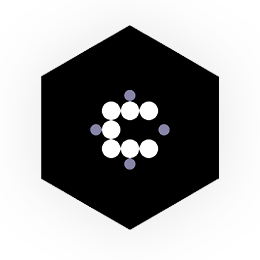The gap between experience and explanation—particularly in the context of language—represents a challenge in Third-Order Cybernetics that CAM can help address by serving as a bridge between these two realms. In CAM, language, as the vehicle for explanation, can be shaped and informed by the deeper layers of cognitive and sensory experience, ensuring that explanations are not merely abstract but grounded in a holistic understanding of the human experience.
CAM's Role as a Bridge
1. Mission (Integral, Observation): Grounding Experience in Core Purpose
- Experience: At the level of Mission, the system is focused on understanding the core values and purpose that inform the reasoning process. This is the foundation where raw experience is gathered, not yet filtered or abstracted into explanations.
- Bridge: Language here begins to take shape as observation seeks to articulate the purpose behind experience. Conscious Awareness guides this process by ensuring that the language used to describe core values remains true to the experience, creating an integral bridge between the internal world and the initial observation of reality.
- Example: The way someone describes a deeply felt purpose can either be abstract or deeply resonant, depending on how much language remains grounded in the lived experience of that purpose.
2. Vision (Dimensional, Orientation): Framing Experience into Desired Outcomes
- Experience: Vision deals with how the desired outcomes are framed and shaped by orientation towards future states. Here, language can often create abstractions that lose connection with experience if not carefully guided.
- Bridge: CAM helps maintain a dimensional perspective where the words used to frame the future (vision) are not merely strategic abstractions but are anchored in the lived, multi-faceted understanding of the present. Conscious Awareness ensures that language used to describe the vision remains connected to both the sensory and emotional experiences that gave rise to the vision.
- Example: Describing a future state (such as success or fulfillment) in a way that resonates emotionally and intellectually requires connecting the abstract goals with the felt experience that motivates them.
3. Strategy (Relational, Decision): Translating Experiences into Methodologies
- Experience: Strategy represents the phase where decision-making processes are developed based on synthesized information. This is where experience needs to be relationally translated into actionable steps.
- Bridge: CAM's focus on relational decision-making ensures that the strategy is not merely a detached intellectual exercise but a translation of experiences into strategies that feel meaningful and applicable. Here, language becomes the tool that bridges subjective experience and objective decision-making.
- Example: A strategy informed by a personal journey (such as overcoming challenges) is more impactful when it resonates with the individual's experience, rather than being purely abstract or procedural.
4. Tactics (Structural, Action): Embodying Explanations in Action
- Experience: Tactics focus on the execution of strategies through practical steps. This is where language becomes action, turning explanation into reality through implementation.
- Bridge: In CAM, Conscious Awareness ensures that the language used to describe actions is connected to the embodied experience, keeping it structural and relevant. This creates a consciousness-embodied bridge, where words reflect the actions that are taken and ensure that the explanations maintain their relevance in the physical realm.
- Example: A leader giving instructions for a project based on a shared experience with the team (e.g., overcoming obstacles) will use language that reflects not only the task but the shared experience, creating alignment between explanation and action.
Conscious Awareness: Managing the Gap
- Conscious Awareness: CAM uses Conscious Awareness to regulate the gap between experience and explanation throughout the entire process. Conscious Awareness ensures that the language used to describe observations, frame visions, make decisions, and take actions is continually re-aligned with the experiences that inform them. It prevents explanations from becoming disconnected or overly abstract by ensuring that they remain true to the inner perspective and the core human experiences behind them.
Closing the Gap Between Experience and Explanation with CAM
-
Inner Language: The role of CAM is to ensure that the inner language we use to describe our experiences is coherent, consistent, and adaptable to our evolving understanding. By anchoring each stage of the process (Mission, Vision, Strategy, Tactics) in both experience and reflection, CAM helps prevent the alienation that can occur when language becomes divorced from lived reality.
-
Feedback Loops: The feedback mechanisms in CAM (e.g., Intellect, Will, Feeling, Sensation) allow for continuous self-assessment, ensuring that the explanations generated (through language) are constantly refined and realigned with experience. This process helps bridge the experiential gap and avoids creating language that feels disconnected or artificial.
Conclusion:
By integrating the CAM model with the principles of Third-Order Cybernetics, it becomes possible to bridge the gap between experience and explanation through a self-reflective, conscious process. Language becomes a powerful tool for translating inner experiences into external explanations, and CAM ensures that the relationship between the two remains fluid, adaptive, and authentic.




